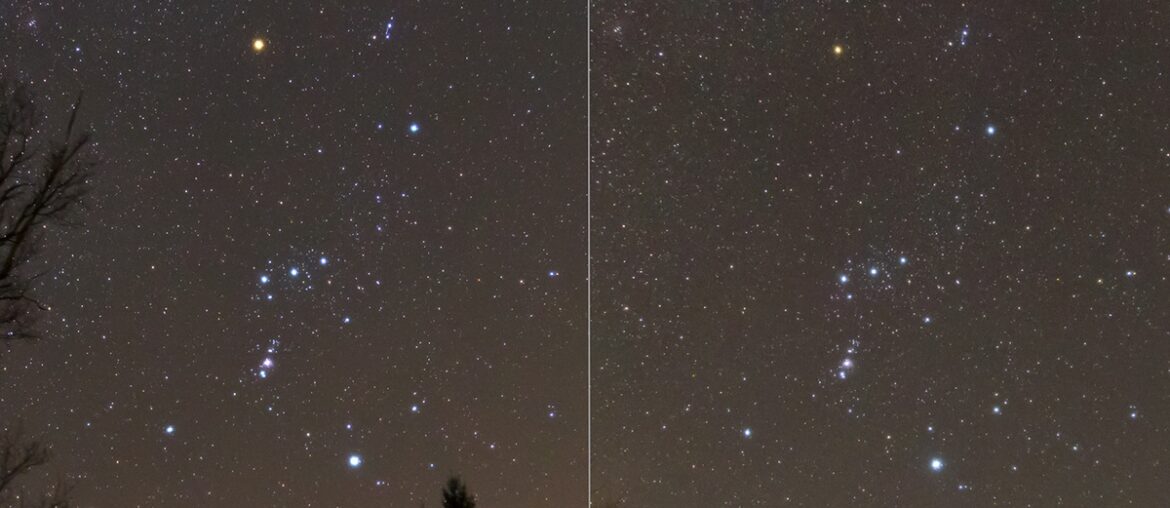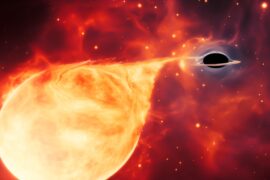The night sky holds names that map myths, languages and lives across cultures. Listing stars named for women highlights those stories and helps readers spot patterns—who’s commemorated, which cultures appear most, and which names are officially recognized.
There are 21 Stars Named After Women, ranging from Alcyone to Uklun. For each entry you’ll find below the fields (Named For,Origin/Culture,IAU Status) so you can see who the name honors, where it comes from, and whether the name is recognized by the International Astronomical Union—you’ll find the full list below.
How were the stars on this list chosen?
The list collects stellar names that explicitly reference women—mythological figures, historical women, or modern dedications—based on published name catalogs, historical sources and IAU records. Entries prioritize names used in reliable references; the table notes origin and official status so you can judge cultural context and source reliability.
Are these names officially recognized by the IAU?
Some are official IAU names and others are traditional or popular usages. The IAU Status column indicates formal recognition; where a name isn’t official, the Origin/Culture column explains its background and common usage so you can understand how widely the name is used.
Stars Named After Women
| Star Name | Named For | Origin/Culture | IAU Status |
|---|---|---|---|
| Alcyone | Alcyone, the leading sister of the seven Pleiades | Greek Mythology | IAU-approved |
| Asterope | Asterope, one of the seven Pleiades sisters | Greek Mythology | IAU-approved |
| Celaeno | Celaeno, one of the seven Pleiades sisters | Greek Mythology | IAU-approved |
| Electra | Electra, one of the seven Pleiades sisters | Greek Mythology | IAU-approved |
| Maia | Maia, the eldest of the seven Pleiades sisters | Greek Mythology | IAU-approved |
| Merope | Merope, one of the seven Pleiades sisters | Greek Mythology | IAU-approved |
| Taygeta | Taygeta, one of the seven Pleiades sisters | Greek Mythology | IAU-approved |
| Aludra | The virginity of the Maiden, the constellation Virgo | Arabic / Greek | IAU-approved (traditional) |
| Porrima | Porrima, the Roman goddess of prophecy | Roman Mythology | IAU-approved |
| Spica | The ear of wheat held by Virgo the Maiden | Latin / Greek | IAU-approved (traditional) |
| Syrma | The train of the robe of Virgo the Maiden | Greek | IAU-approved |
| Schedar | The breast of Queen Cassiopeia | Arabic / Greek | IAU-approved (traditional) |
| Ancha | Ancha, a goddess of the Kichwa people | Kichwa (Ecuador) | IAU-approved |
| Belel | Fula word for a girl born on Tuesday | Fula (Burkina Faso) | IAU-approved |
| Berehynia | Berehynia, a female spirit in Slavic mythology | Slavic Mythology (Ukraine) | IAU-approved |
| Liesma | A popular Latvian female name meaning “flame” | Latvian (Latvia) | IAU-approved |
| Pipitea | A small native bird and a Māori girl’s name | Māori (New Zealand) | IAU-approved |
| Ran | Rán, the Norse goddess of the sea | Norse Mythology | IAU-approved |
| Rosalíadecastro | Rosalía de Castro (1837-1885), a celebrated Spanish poet | Spanish (Spain) | IAU-approved |
| Uklun | A word for ‘girl’ in the Bribri language | Bribri (Costa Rica) | IAU-approved |
| Talitha | The third leap of a gazelle; also Aramaic for “maiden” | Arabic / Aramaic | IAU-approved (traditional) |
Images and Descriptions
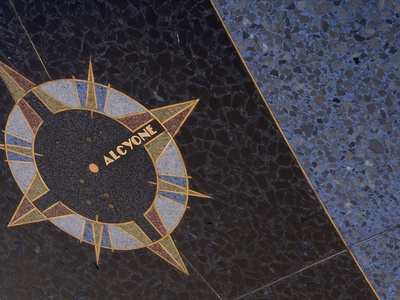
Alcyone
The brightest star in the Pleiades star cluster (M45) in Taurus, Alcyone is a brilliant blue-white giant. In Greek myth, she and her six sisters were transformed into doves and then stars to escape the hunter Orion.

Asterope
A double star in the Pleiades cluster (M45) in Taurus. In mythology, Asterope was one of the seven daughters of Atlas and Pleione, placed in the sky with her sisters. The name means “starry-face.”

Celaeno
A blue subgiant star in the Pleiades cluster (M45) within the constellation Taurus. Often called the “Lost Pleiad” in some myths, as she was said to have hidden her face in shame or grief.

Electra
A blue-white giant star located in the Pleiades open cluster (M45) in Taurus. Like her sister Celaeno, Electra is sometimes considered a “Lost Pleiad” in mythology, said to have vanished after the fall of Troy.
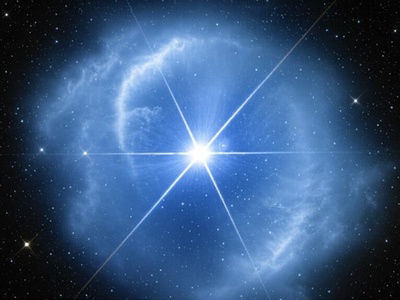
Maia
A blue giant and the fourth-brightest star in the Pleiades cluster (M45) in Taurus. In Greek myth, Maia was the mother of the god Hermes. The star is surrounded by a beautiful reflection nebula.
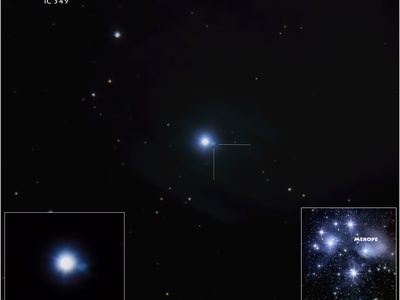
Merope
A blue-white subgiant in the Pleiades cluster (M45) in Taurus, famously enveloped in the Merope Nebula. In myth, she was the only sister to marry a mortal and was said to shine faintly out of shame.
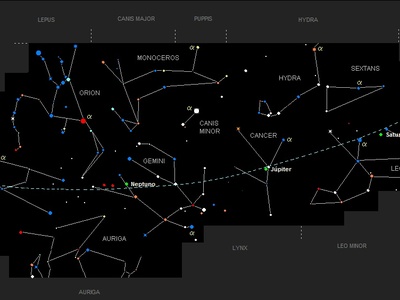
Taygeta
A binary star system in the Pleiades open cluster (M45) in the constellation of Taurus. In Greek mythology, Taygeta was pursued by Zeus and was transformed into a doe to escape him.
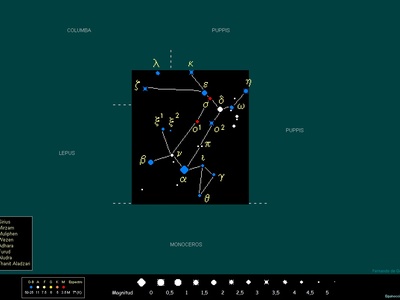
Aludra
A brilliant blue supergiant star in the constellation Canis Major. Its traditional name comes from the Arabic for “the maiden,” a name that was originally applied to a group of stars in or near Virgo.
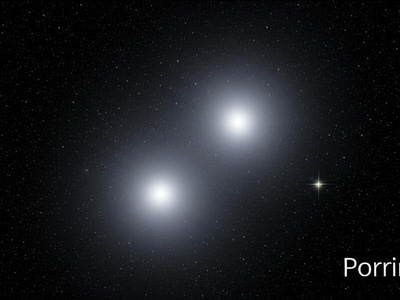
Porrima
A stunning binary star in the constellation Virgo, consisting of two almost identical stars. Porrima was one of the Camenae, Roman goddesses of springs and prophecy, often associated with the Maiden Virgo.

Spica
The brightest star in the constellation Virgo, Spica represents the ear of wheat held by the Maiden. It is one of the brightest stars in the night sky and is actually a close binary star system.

Syrma
A star located in the constellation Virgo. Its name is derived from the Greek word for the train of a long robe, referring to the robe worn by the mythological figure Virgo, the Maiden.
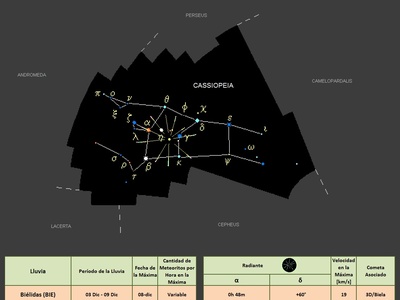
Schedar
An orange giant star and the brightest in the constellation Cassiopeia. Its name comes from the Arabic word for “breast,” marking the heart of the mythological Queen Cassiopeia as she sits on her throne.
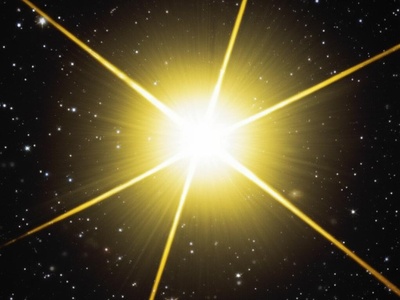
Ancha
This yellow-white giant star is in the southern constellation of Chamaeleon. It was named by the Kichwa people of Ecuador after their goddess who protected harvests and was said to be a guide for shamans.

Belel
The host star of an exoplanet, located in the constellation Pictor. It was named by Burkina Faso as part of the NameExoWorlds project. “Belel” is a common word in the Fula language for a young girl.

Berehynia
Located in the constellation Andromeda, this star was named by Ukraine in an IAU contest. Berehynia is a hearth mother and protectress of the home in ancient Slavic folklore, a powerful “spirit-nymph.”

Liesma
This star, found in the constellation Vulpecula, was named by Latvia during the IAU100 NameExoWorlds campaign. Liesma is a popular and poetic female given name in Latvia that translates directly to “flame.”
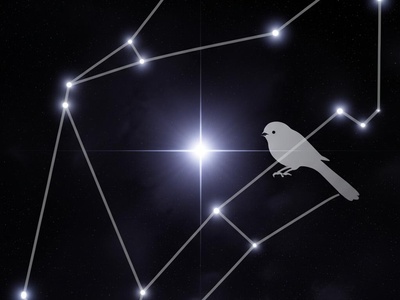
Pipitea
This star is located in the southern constellation of Horologium and was named by New Zealand. The name Pipitea refers to both a small white-headed bird and a traditional Māori name given to girls.

Ran
One of the closest single sun-like stars to us, located in the constellation Eridanus. It was named for the Norse goddess who rules over the sea. It has at least one confirmed exoplanet.
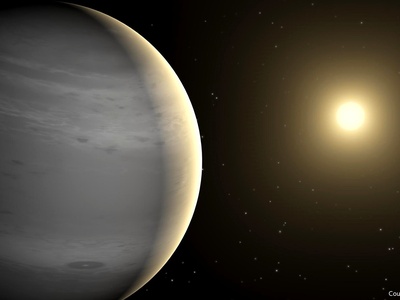
Rosalíadecastro
This sun-like star in the constellation Serpens Cauda was named in honor of Rosalía de Castro, a major figure in Spanish literature. The name was chosen by Spain in the IAU100 NameExoWorlds contest.
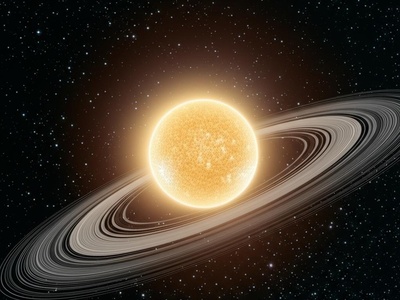
Uklun
This star, located in the constellation Indus, hosts an unusual exoplanet. It was named by Costa Rica after the word for “girl” in the language of the indigenous Bribri people.
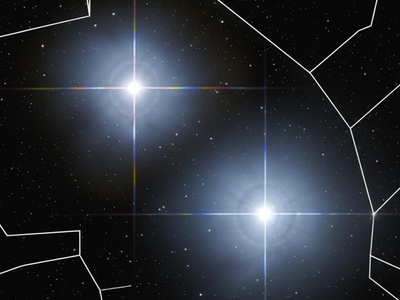
Talitha
A binary star system in the constellation Ursa Major. While its name technically comes from an Arabic phrase for “the third leap,” it is also identical to the Aramaic word for “maiden” or “little girl.”
Enjoyed this article?
Get daily 10-minute PDFs about astronomy to read before bed!
Sign up for our upcoming micro-learning service where you will learn something new about space and beyond every day while winding down.

